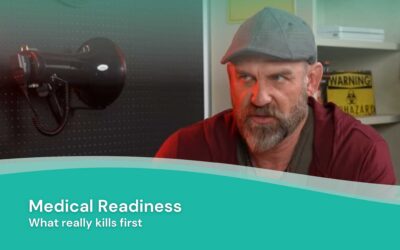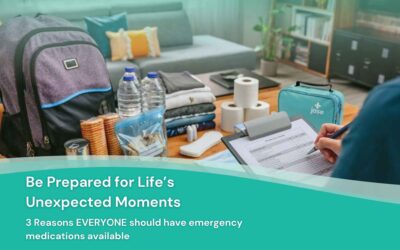

This is a dilemma that plays out daily in thousands of households across America. You are getting your children ready for school, and your son or daughter says that they don’t feel good. You ask, how don’t you feel good, while feeling their forehead, which is warm but don’t seem to be sick.
Your child says that they have a stomachache, and they just don’t feel good. They don’t have diarrhea, are not vomiting, aren’t running a fever, no sinus congestion, cough, or any other signs of being ill. What should you do?
Determine the cause
Has your child been under excessive stress or prone towards test anxiety? Are they supposed to do a presentation in front of their appears? Is there anything going on with friends or school that could cause them to not want to go to school? Many times, stomach aches can be traced to something going on at school. This is especially true if there are no other symptoms.
On the other hand, if the stomach flu is going around the school or in your home, or you suspect food poisoning, you may want to keep them home.
What to do
If you suspect your child is having trouble at school-either struggling with test anxiety, feeling overwhelmed with school, trouble with peers or teachers-talk with your child and the guidance counselor at their school to get to the root cause. It may take a bit of coaxing but be persistent. Let your child know you care and want to help.
Many children are feeling the stress of what’s going on in the world, and they’re unable to communicate these feelings. They tend to not express emotions and many don’t have skills to identify and cope with life’s stressors.
We are facing a mental health crisis with our children.
The American Psychological Association, APA, has published a 2023 trends report which included an article titled “Children’s Mental Health is In Crisis”. Even before the pandemic, feelings of sadness and hopelessness, as well as suicidal thoughts and behaviors, had increased by 40% among young people. “We’re seeing a really high rate of suicide and depression, and this has been going on for a while,” said psychologist Kimberly Hogwood, PhD a professor of child and adolescent psychiatry at New York University’s Grossman School of Medicine.” It certainly got worse during the pandemic”.
Social media, world events and readjusting to the post pandemic world has created the perfect recipe for a mental health crisis.
How to meet the needs of the children with the shortage of providers
Because of limited resources and providers, some children are on waiting for more than 6 months for mental health support.
- Telehealth is bridging the gap between providers, families and children and is providing some relief to the strained system. Telehealth is a promising way of delivering mental health services because of the flexibility in scheduling- they can hold appointments during or after school, and in a variety of settings.
- What Works in Schools Program, is a CDC funded program in which school districts make changes to foster school connectedness.
- Developed by the mental health technology transfer center network and the University of Maryland National Center for school mental health, Classroom WISE is a free online course and resource library that educates on mental health, behavioral regulation, mental health literacy and trauma.
There is no quick and easy fix to this mental health crisis, but there are a few things you can do to help your child/children avoid a mental health crisis.
- Create a safe and supportive environment. Children are very much in tune with how adults handle situations and how they view the world. Being emotionally and physically present can be a huge buffer to what is going on outside your home- either in school or the world.
- Encourage open communication and active listening. Active listening is being fully engaged while another person is talking to you. It is listening with the intent to understand the other person fully, rather than listening to respond. It is a skill that has gone by the wayside because of our easy and quick access to multiple streams of information flooding our lives.
- Provide structure and consistency. Both structure and consistency are the foundation in which mental health rests. Once you have established a framework of structure- what is expected and what to expect and are consistent in enforcing these expectations, children will feel more secure in opening up and expressing their feelings.
- Encourage positive relationships with peers and adults. Know who your childrens friends are- and their parents. Invite them over, spend time with them. If you feel one of their friends is an unhealthy influence, calmly talk to your child about why you feel that way. Let them know you are looking out for their wellbeing and limit or exclude friends that are an unhealthy influence. This also goes for teachers and other adults your child knows. Listen to your child if they express any apprehension or anxiety about any adult in their life. Act accordingly.

- Limit screen time, and social media and encourage outdoor activities. Set a timer, add parental controls, block social media, and know what your child is doing on the computer. Be consistent. Internet predators can cause immense psychological harm to your child. Encourage outdoor activities, sports, walking the dog, anything to get your child out in the fresh air and away from screens. A recent Gallup poll revealed that 51 percent of teens (age 13-19) spend at minimum 4 hours on social media, with an average of 4.8 hours a day. (You Tube, Tik Tok, Facebook, Instagram, and X(formerly Twitter )),
- Model healthy stress management techniques. Children learn by example. Limiting computer time, healthy eating, exercise and healthy relationships are some examples of healthy stress management. Include your children in your activities as you are able. This will provide a solid foundation for your child to avoid a mental health crisis.
Help in time of a mental health crisis is a phone call away
9-8-8 is the national number for suicide prevention and mental health crises. This number, (like local 911 emergency), is a 24/7 national crisis response number that can put you in touch with someone that can help.
If you, your child or someone you care for is experiencing a mental health crisis there is help. Check the National Hotline for Mental Health Crises And Suicide Prevention.
- Brooke Lounsbury, RN
Medical Content Writer
Lifesaving Medications
Recent Posts
Keeping you informed and safe.
Medical Readiness: What Really Kills First
When Disaster Strikes, It’s Not Hunger or Thirst That Takes the First Lives In every disaster zone, from hurricanes in the Caribbean to war zones in Ukraine, the pattern is the same. People worry about food and water, but it’s infection that kills first. A small wound...
Exploring Dr. William Makis’ Hybrid Orthomolecular Cancer Protocol: Focus on Ivermectin and Mebendazole/Fenbendazole
Exploring Dr. William Makis’ Hybrid Orthomolecular Cancer Protocol: Focus on Ivermectin and Mebendazole/Fenbendazole *Disclaimer: This article is for educational purposes and does not constitute medical advice. Always seek professional guidance.* In the evolving...
Be Prepared for Life’s Unexpected Moments
3 Reasons EVERYONE should have emergency medications avaiable. It's all about access—access to medications and care when you need it most. And when things happen outside of your control that access can disappear.Below are 3 examples of how easily this access can be...



